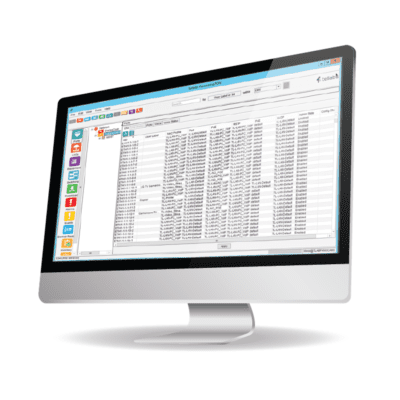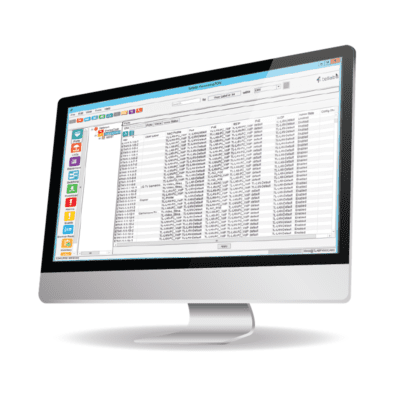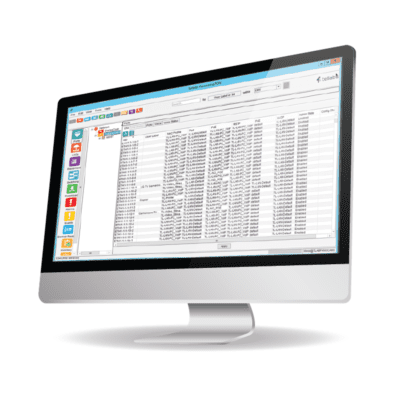Software Defined Networking
Today, Tellabs Optical LAN allows network resources to be defined in software and dynamically allocated based on real-time needs – and in the future, open-source standards-based SDN will be supported.
Optical LAN is the best architecture for Software Defined LAN
Industries continues to deploy traditional copper-based Local Area Networks (LAN) while evaluating the merits of implementing Software Defined Networking (SDN) functionality. They are doing this under the assumption that SDN fixes traditional LAN’s operational efficiencies, security and reliability short comings. However, what they don’t know is that by bolting-on SDN as an overlay to a legacy LAN design, they leave the inherent weakness of traditional LAN in place. Adding the complexity with SDN can marginally improve the LAN’s operational efficiencies, security and reliability, but by introducing more sophistication, the fixes can negatively contribute to the same attributes they were intended to repair. Furthermore, there are alternative means of addressing the fundamental faults that specifically fix root problems.
Tellabs Optical LAN always has been, and continues to be, the first best choice in support of the Software Defined Networking evolution. By investing in Tellabs Optical LAN today, you are gaining the best LAN operational efficiencies, reliability and security, and you are laying the foundation for true Software Defined Local Area Network (LAN) in the future.
Quick Facts
- Optical LAN has unified management and streamlined service delivery
- Reduce human errors improving efficiency, reliability and security
- Simple ONTs are best for SDN rather than complex full-function switches
- OLAN has future path to open-source and standards-based SDN protocols
- It automates provisioning, global policies, management and monitoring
- OLAN SDN management ensures consistent policies and procedures
The simplicity of software defined LAN directly improves network reliability and security
Flexible, resilient and scalable
Tellabs Optical LAN is more flexible, resilient and scalable compared to traditional LAN architecture since an OLAN design matches modern traffic patterns while minimizing equipment and optical-to-electrical conversions. With less minimized equipment, modules and ports, this all translates to optimized operational efficiencies, greater reliability and better security. An OLAN enjoys 99.999% network up-time (5 minutes annual downtime) and a cost-effective 99.9999% option is available. An Optical LAN can also deliver greater density of gigabit Ethernet connectivity with less physical space impact in data centers, telecommunications rooms and cable pathways.
Global policies, control and orchestration
OLAN provides unified management, streamlined service delivery, automated provisioning, troubleshooting and monitoring on a global scale. Network orchestration and automation is provided through software-defined resources that are dynamically allocated based on real-time requirements. This allows for faster installation, operational tasks and daily moves, adds and changes. Discovery mechanisms and quick views of the total LAN system, ONTs, subtended devices, services, users, bandwidth, QoS and security policies allow IT to be more efficient, do more with less and handle IT skill set and head count reductions.
Minimizes malicious and negligent events
OLAN minimizes malicious and negligent human errors, directly improving the LAN’s operational efficiency, reliability and security. Centralized intelligence and management reduces human error and misuse by promoting machine-to-machine and process consistency. Policy consistency is achieved through global policies and profiles that are distributed to all locations. Employee training is improved via set privileges, capture of actions and online help.
Simple unmanaged ONTs
Simple unmanaged ONTs are best suited for SDN rather than complex, full-functioning traditional switches. Optical LAN ONTs are designed with no local management access because there is little need for human touch. The ONTs are basically simple optical-to-electrical terminals. They can be described as “thin-client”, thus matching SDN intent for “white box” type switches. Yet, they are capable of delivering all the connections, services and applications required for an Optical LAN. And they are highly reliable and secure, which ultimately helps improve operational efficiencies.
Graceful migration to 10G and 40G PON
OLAN allows efficient migration with G-PON, XGS-PON, (10G) and NG-PON2 (40G) technology choices. XGS-PON is defined as part of the ITU-T G.989 standard. XGS-PON provides symmetrical (e.g., 10 Gbps downstream and 10 Gbps upstream) transmission which is a hard requirement for true enterprise Passive Optical LAN. Today’s 2.4 GbE (ITU 984) ONTs can be supported alongside the new 10G XGS-PON ONTs (ITUG.989), thus providing a graceful migration to next-generation 10G PON that can be managed on a per ONT basis. Because of this, only the end-devices that truly need 10G will need to be upgraded to 10G.
Looking for more information?
If you still need additional details, and even greater technical explanation, then click on the “Download White Paper” button below to access our comprehensive Passive Optical LAN and Software Defined Networking white paper.



